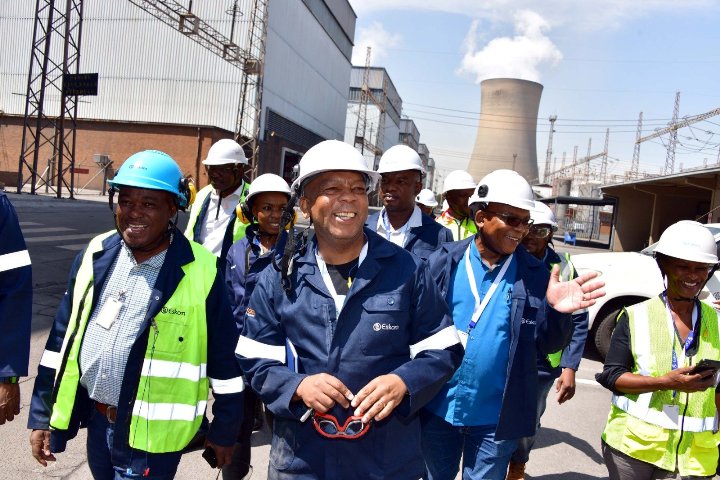SA Launches Private-Led Transmission Plan to Boost Energy Capacity
The core of the ITP is to enable the private sector to fund, build, and operate new transmission lines, addressing a critical bottleneck in South Africa’s energy ecosystem.

- Country:
- South Africa
In a landmark announcement aimed at addressing South Africa’s persistent electricity supply challenges, Minister of Electricity and Energy Dr. Kgosientsho Ramokgopa has unveiled a bold initiative to open up the country’s electricity transmission sector to private investment. Speaking at a media briefing in Pretoria on Tuesday, the Minister introduced the Independent Transmission Programme (ITP)—a new framework designed to facilitate the construction of vital transmission infrastructure to support the country’s rapidly expanding renewable energy sector.
Unlocking Renewable Energy Potential
The core of the ITP is to enable the private sector to fund, build, and operate new transmission lines, addressing a critical bottleneck in South Africa’s energy ecosystem. Dr. Ramokgopa emphasized that while South Africa has abundant renewable energy resources, particularly in solar and wind across the Cape provinces, the current transmission grid is severely constrained, preventing the full exploitation of these assets.
“Our renewable energy assets are not fully exploited as a result of the constraints on the transmission side,” he said. “The Eskom balance sheet and the sovereign balance sheet is not sufficient to carry the kind of investments that are required in this space.”
To bridge this gap, the government has issued a ministerial determination that will allow and encourage private sector participation in the development of transmission infrastructure. The initiative marks a shift in strategy, moving from a state-dominated utility model to a more diversified, investor-driven approach.
A R440 Billion Opportunity
According to the national Transmission Development Plan (TDP), South Africa needs to build approximately 14,000 kilometres of new transmission lines by 2032 to meet growing electricity demand and integrate new renewable generation. The estimated cost of this expansion is R440 billion, a sum well beyond the capacity of the state alone.
Dr. Ramokgopa noted that the new transmission lines will specifically target areas where the highest potential for clean energy exists. “That is where we have the most efficient and reliable energy assets in the form of solar and wind, but we have exhausted all of the transmission that allows us to evacuate the electrons so that the economy can benefit from those assets,” he said.
Pilot Phase to Add 1,164km of Lines and 3,222MW to the Grid
The ITP will be launched with a pilot phase that includes the development of 1,164 kilometres of new transmission lines. This critical infrastructure is expected to unlock 3,222 megawatts (MW) of new electricity generation capacity—roughly 63% of the combined capacity of the Medupi and Kusile power stations, two of the country's largest coal-fired facilities.
“This is a significant leap forward,” Ramokgopa stated. “For the South African economy to grow, we need to unshackle the issues of the structural constraints, which is electricity, and the inefficiencies in the logistics side. The second is greater investment by the private sector.”
Transparent Procurement and Regulatory Oversight
To ensure fairness and transparency, the procurement process for the ITP will be governed by strict guidelines. Ramokgopa explained that the Ministry of Electricity and Energy will oversee the procurement, while the National Transmission Company of South Africa (NTCSA)—a new state-owned entity created from Eskom’s unbundling—will act as the off-taker, purchasing the transmission services.
“We are going to ensure that we procure the most cost-effective and tendering procedures that are fair, competitive, and equitable,” he said. “The requirement for the ITP pilot has to be consistent with the transmission development plan and it must also support the Integrated Resource Plan (IRP). It must be commercially viable.”
The regulatory framework governing the ITP is set to be published on Thursday. Following that, a Request for Qualification (RFQ) will be issued in July, and a Request for Proposals (RFP) will follow in November.
A Turning Point for South Africa’s Energy Future
The Independent Transmission Programme is widely seen as a transformative step in South Africa’s energy journey. With chronic load shedding having plagued the nation for over a decade, energy security has become a central issue for economic growth, investor confidence, and public wellbeing.
By enabling private sector participation, the government aims to fast-track the expansion of grid capacity, enhance reliability, and support the integration of cleaner energy sources. The initiative also reflects a broader strategy of restructuring Eskom and encouraging greater private investment in the energy sector—once dominated exclusively by the state.
“This is more than just infrastructure development,” Ramokgopa concluded. “Electricity gives us a pristine opportunity to transform and grow the South African economy.”
As the ITP unfolds in the coming months, industry stakeholders, investors, and citizens alike will be watching closely to see whether this bold new approach can deliver the energy stability the country so desperately needs.










